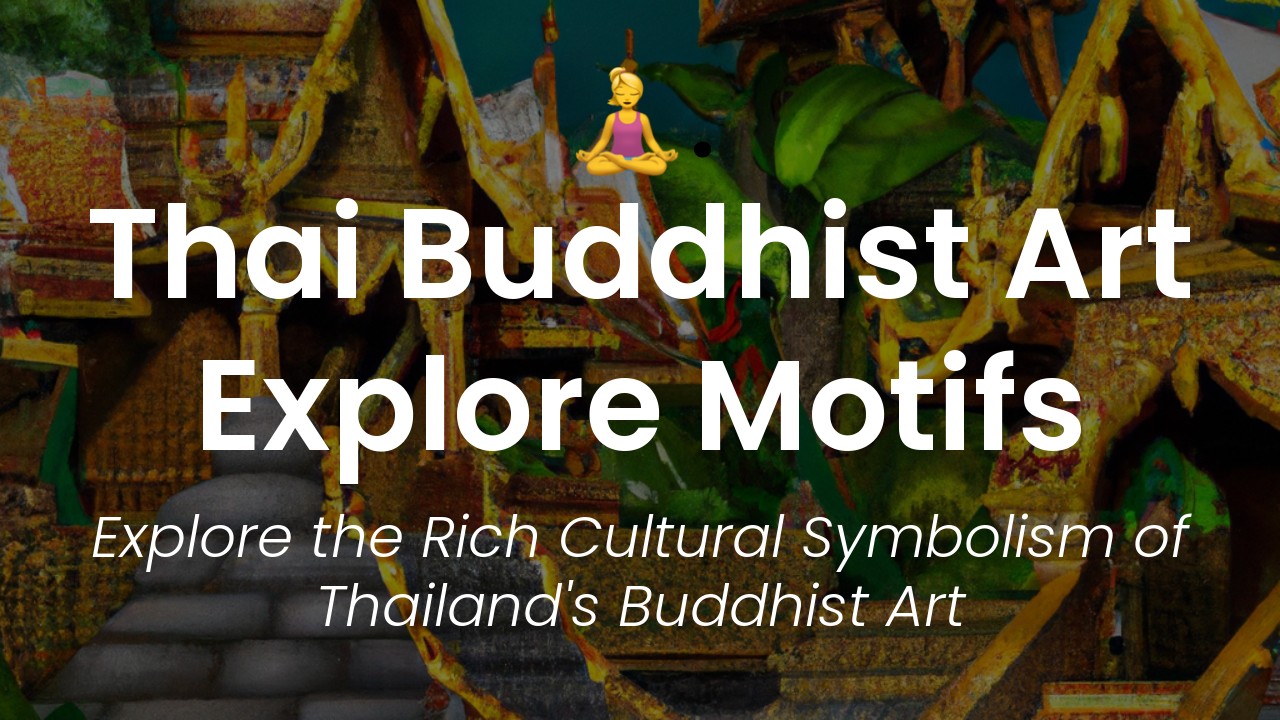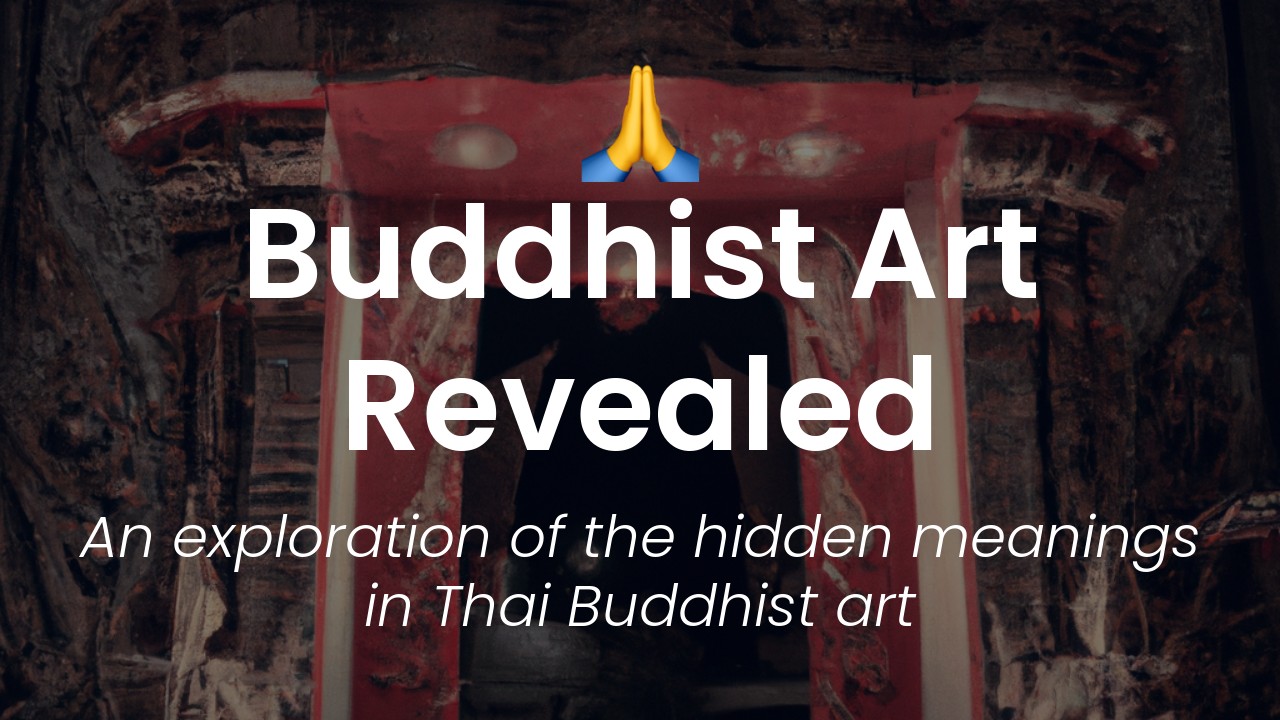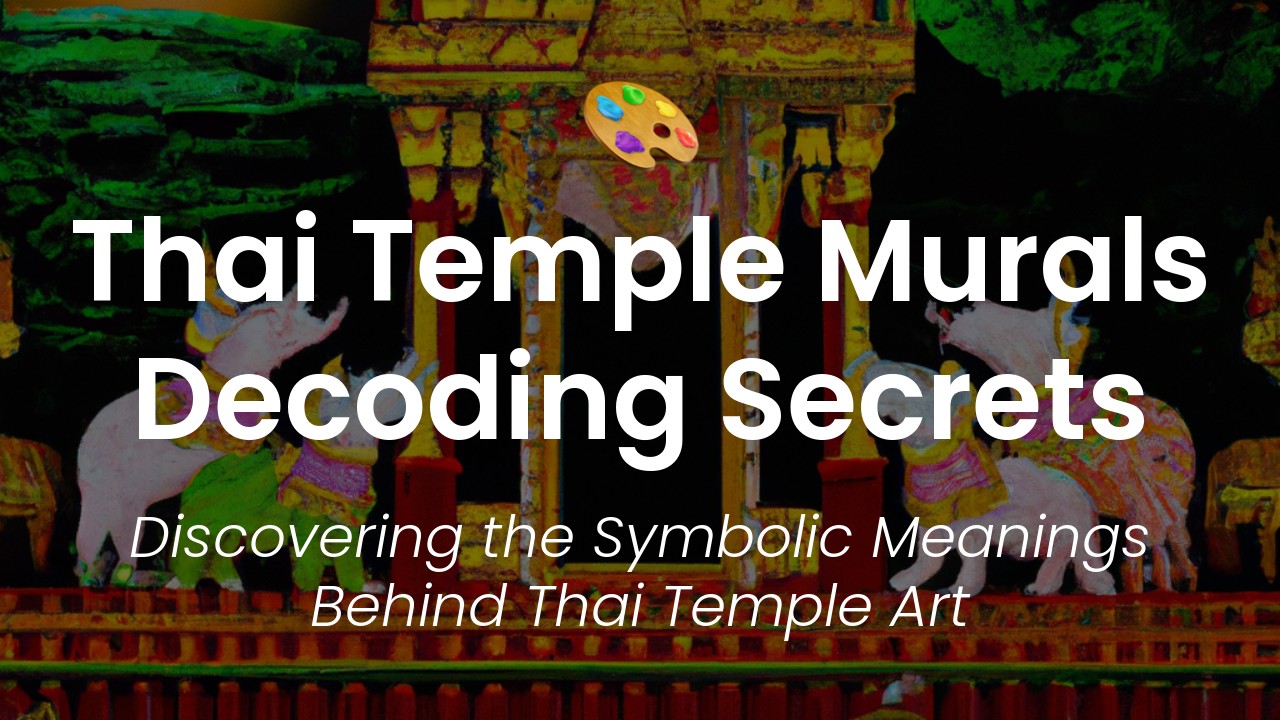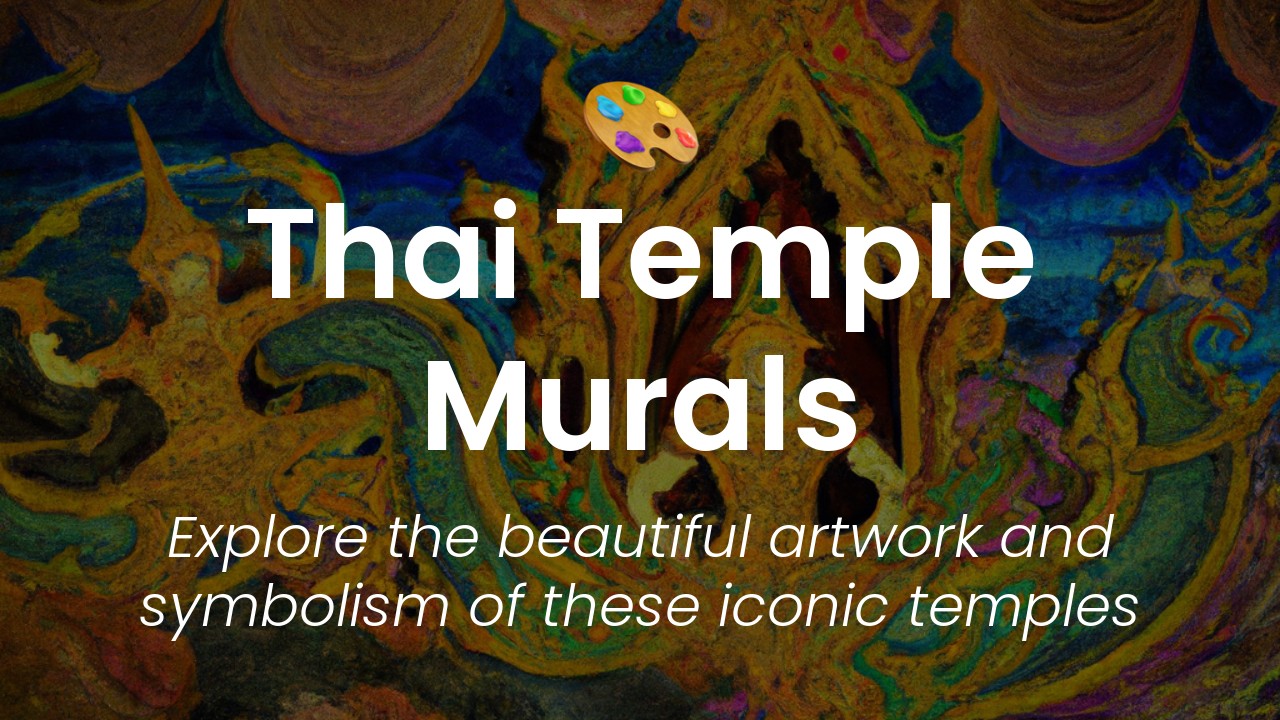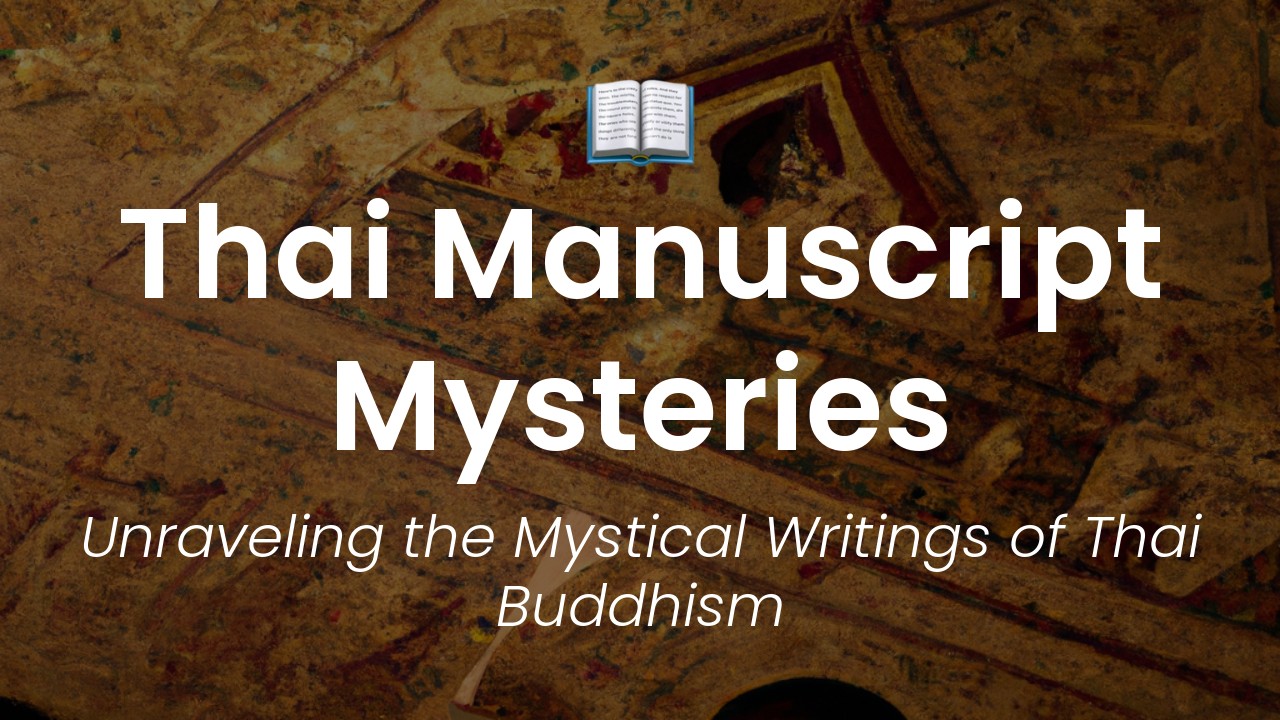As a Thai, I have always been fascinated by the intricate beauty of Buddhist motifs in Thai art. From temples and statues to textiles and pottery, these motifs are ubiquitous in Thailand and have become an integral part of our cultural heritage. But what do these symbols actually mean? And how did they come to be part of Thai art?
In this blog post, I aim to unlock the secrets of Buddhist motifs in Thai art, delving into their history and symbolism. As a lover of storytelling, I believe that understanding the background of these motifs is key to appreciating their beauty and meaning. Along the way, I hope to share some interesting anecdotes and lesser-known facts that will inspire you to take a closer look at these important symbols the next time you encounter them.
By tracing the journey of these motifs from ancient India to present-day Thailand, I hope to provide a glimpse into the complex evolution of Thai art and culture. From the Wheel of Law to the Lotus Flower, each symbol has a unique story to tell, steeped in centuries of religious and cultural significance. So join me on this journey of discovery as we uncover the secrets of Buddhist motifs in Thai art, and learn to appreciate these symbols in a whole new light.
A Brief History of Buddhism in Thailand
Buddhism has been an integral aspect of Thai culture for over a thousand years. It arrived in the region in the 3rd century BCE when Indian monks travelled to Southeast Asia to spread their teachings. Over time, Buddhism became an integral part of traditional Thai culture and today the country boasts some of the most beautiful and intricate Buddhist art in the world.
Understanding Buddhist Symbolism in Art
Buddhist art is full of symbolism that is designed to depict aspects of the religion, its teachings, and its history. One of the most common motifs found in Buddhist art is the lotus flower. The lotus is widely regarded as a symbol of enlightenment and is often depicted as part of Buddha’s surroundings.
Another commonly used motif in Buddhist art is the bodhi tree. This tree represents the spot where Buddha attained enlightenment and is often depicted with intricate and detailed depictions of the tree’s roots, branches, and leaves. When combined with other motifs like the lotus flower, the bodhi tree can help to create highly elaborate and detailed depictions of Buddhist themes and symbols.
The Importance of Lotus Flowers and Bodhi Trees
The lotus flower is often depicted as a way to represent the journey to enlightenment. This is because the lotus flower grows in muddy and murky water but emerges from the darkness to bloom into a beautiful and pure flower. Similarly, those who practice Buddhism aim to emerge from the darkness of ignorance to attain enlightenment and live a pure and spiritual life.
The bodhi tree, as mentioned earlier, represents the spot where Buddha attained enlightenment. It is regarded as a representation of the physical location where one can reach spiritual enlightenment. The tree itself is often depicted in intricate detail, with depictions of its roots and branches appearing in many different styles and designs.
The Meaning Behind Buddha Poses and Mudras
In traditional Thai Buddhist art, the Buddha is often depicted in a variety of poses and hand gestures. These poses and gestures are known as mudras and each of them holds a specific meaning. For example, the Bhumisparsha Mudra is where the Buddha is depicted with his right hand touching the earth. This is a representation of Buddha overcoming the demon Mara and it represents steadfastness, purity, and wisdom.
Another common mudra used in Thai art is the Dharmacakra Mudra. This is where the Buddha is depicted with his thumb and index finger touching, forming a circle with the rest of his fingers. This mudra symbolizes the Buddha’s first sermon, which took place at a place called the Deer Park. The circle represents the Wheel of Dharma and the Buddha’s teachings, which he was about to share with his followers.
The Significance of Color and Material Choice
Color plays a crucial role in traditional Thai Buddhist art. Different colors are used to represent different parts of Buddhist teachings and history. For example, the color blue is commonly used to represent the Buddha or bodhisattvas. Yellow is often used for Buddha’s followers, and red is used to represent anger or negative emotions.
In addition to colors, different materials are also used in creating Buddhist art. For example, gold represents enlightenment, while silver represents illumination. Wood is often used to create versions of the bodhi tree or other natural elements, and bronze is used to represent power and strength.
Famous Thai Buddhist Artworks and their Meanings
Thai Buddhist art has produced some of the most beautiful and intricate artworks in the world. Some of the most famous pieces include the Emerald Buddha, which is made from green jasper and depicts Buddha in a meditative pose. Another famous piece is the Reclining Buddha at Wat Pho, which measures an impressive 46 meters in length and 15 meters in height.
Other famous artworks include ornately decorated temples such as Wat Phra Kaew, which is located on the grounds of the Grand Palace in Bangkok. The temple is covered in gold leaf and decorated with colorful glass mosaics. Another famous temple is Wat Arun, also located in Bangkok, which is covered in intricately decorated tiles and features a beautiful central pagoda.
The Role of Thai Art in Buddhism's Spread to the West
Thai art has played a crucial role in bringing Buddhist teachings to the wider world. Through beautiful and intricate depictions of Buddhist symbols, figures, and teachings, traditional Thai art has helped to spread the religion’s teachings and values throughout Southeast Asia and beyond.
Today, Thai art continues to inspire and captivate audiences around the world. Its intricate depictions of Buddhist themes and motifs are renowned for their beauty and craftsmanship. Whether depicting lotus flowers, bodhi trees, or Buddha poses, Thai art represents a true celebration of one of the world’s most influential religions.

